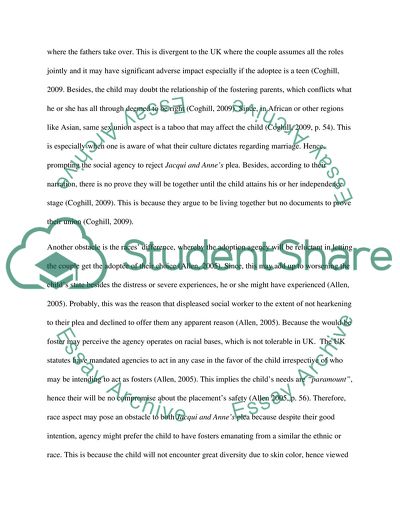Cite this document
(“Adopting a Child by Lesbian Couple Essay Example | Topics and Well Written Essays - 2500 words”, n.d.)
Adopting a Child by Lesbian Couple Essay Example | Topics and Well Written Essays - 2500 words. Retrieved from https://studentshare.org/social-science/1612683-adoption-lesbian-couple-case-study
Adopting a Child by Lesbian Couple Essay Example | Topics and Well Written Essays - 2500 words. Retrieved from https://studentshare.org/social-science/1612683-adoption-lesbian-couple-case-study
(Adopting a Child by Lesbian Couple Essay Example | Topics and Well Written Essays - 2500 Words)
Adopting a Child by Lesbian Couple Essay Example | Topics and Well Written Essays - 2500 Words. https://studentshare.org/social-science/1612683-adoption-lesbian-couple-case-study.
Adopting a Child by Lesbian Couple Essay Example | Topics and Well Written Essays - 2500 Words. https://studentshare.org/social-science/1612683-adoption-lesbian-couple-case-study.
“Adopting a Child by Lesbian Couple Essay Example | Topics and Well Written Essays - 2500 Words”, n.d. https://studentshare.org/social-science/1612683-adoption-lesbian-couple-case-study.


